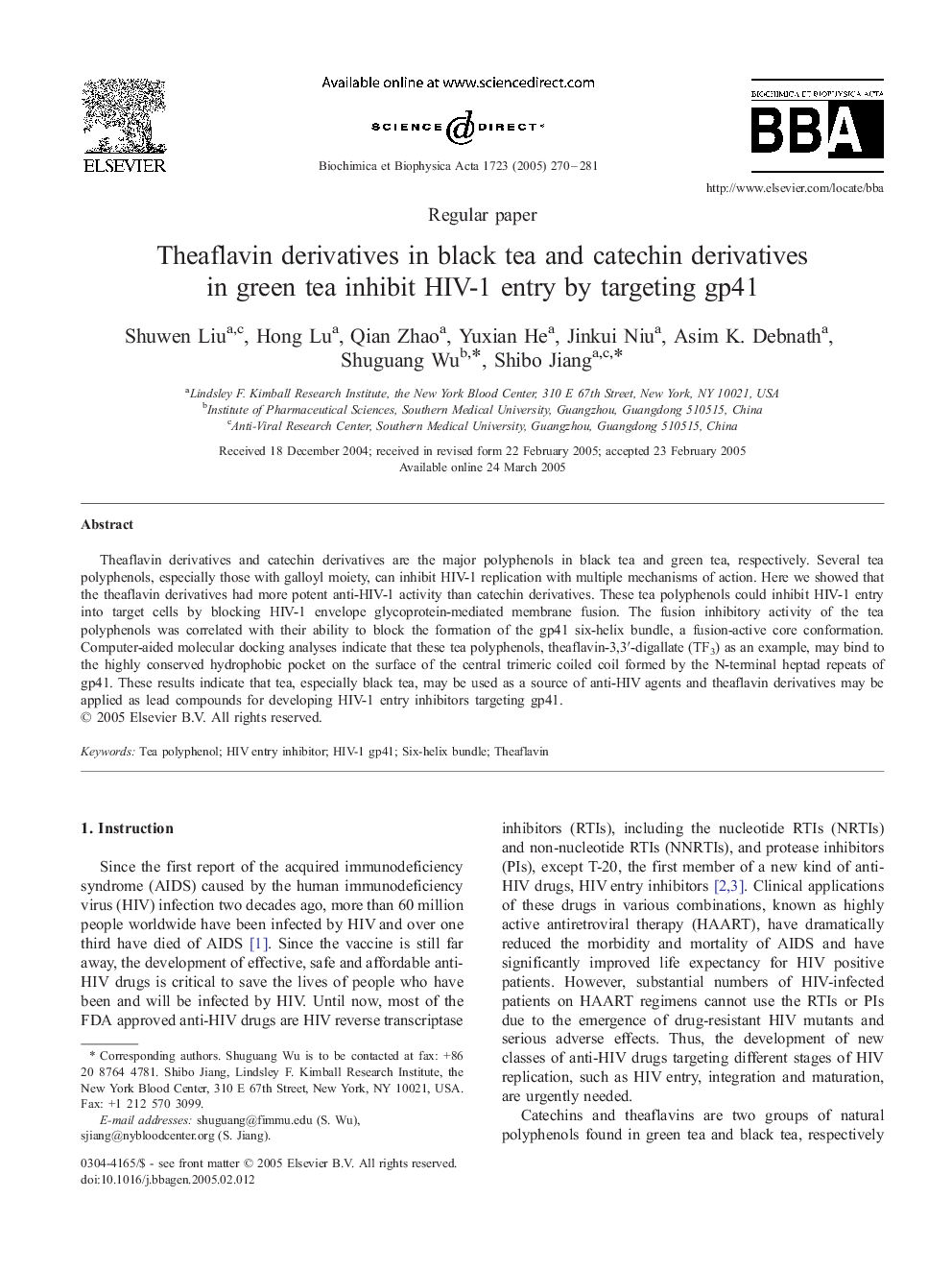| Article ID | Journal | Published Year | Pages | File Type |
|---|---|---|---|---|
| 9886144 | Biochimica et Biophysica Acta (BBA) - General Subjects | 2005 | 12 Pages |
Abstract
Theaflavin derivatives and catechin derivatives are the major polyphenols in black tea and green tea, respectively. Several tea polyphenols, especially those with galloyl moiety, can inhibit HIV-1 replication with multiple mechanisms of action. Here we showed that the theaflavin derivatives had more potent anti-HIV-1 activity than catechin derivatives. These tea polyphenols could inhibit HIV-1 entry into target cells by blocking HIV-1 envelope glycoprotein-mediated membrane fusion. The fusion inhibitory activity of the tea polyphenols was correlated with their ability to block the formation of the gp41 six-helix bundle, a fusion-active core conformation. Computer-aided molecular docking analyses indicate that these tea polyphenols, theaflavin-3,3â²-digallate (TF3) as an example, may bind to the highly conserved hydrophobic pocket on the surface of the central trimeric coiled coil formed by the N-terminal heptad repeats of gp41. These results indicate that tea, especially black tea, may be used as a source of anti-HIV agents and theaflavin derivatives may be applied as lead compounds for developing HIV-1 entry inhibitors targeting gp41.
Related Topics
Life Sciences
Biochemistry, Genetics and Molecular Biology
Biochemistry
Authors
Shuwen Liu, Hong Lu, Qian Zhao, Yuxian He, Jinkui Niu, Asim K. Debnath, Shuguang Wu, Shibo Jiang,
